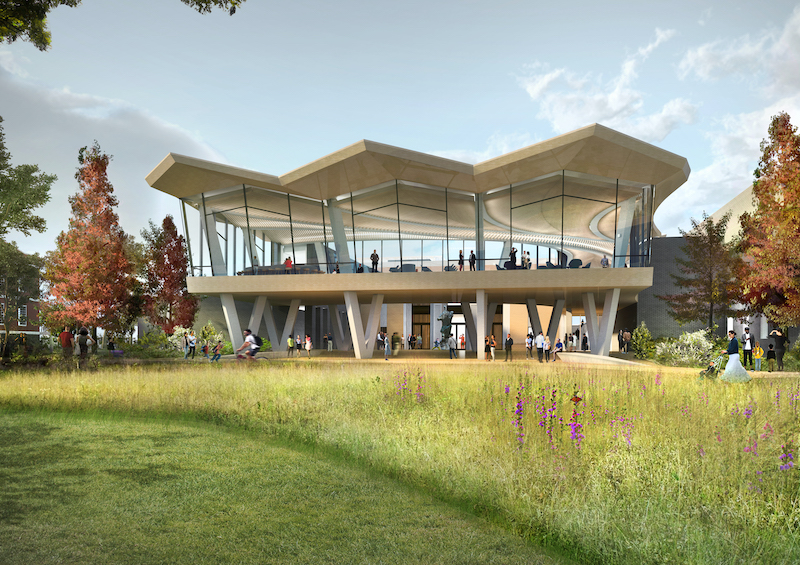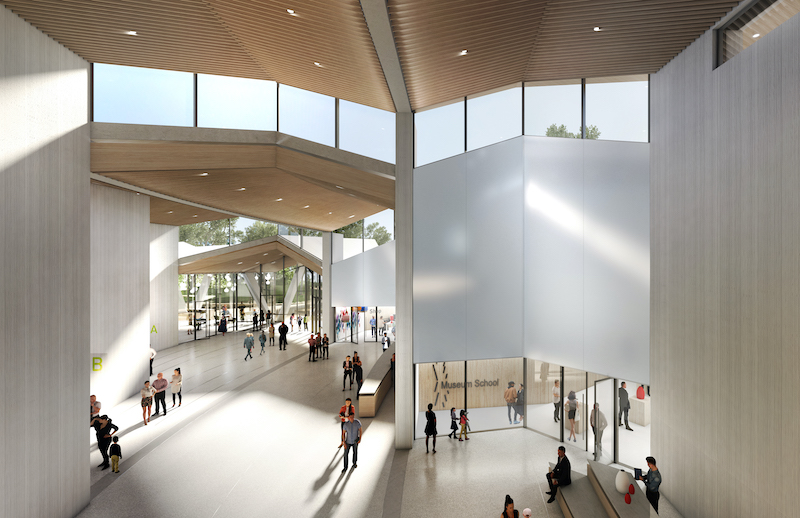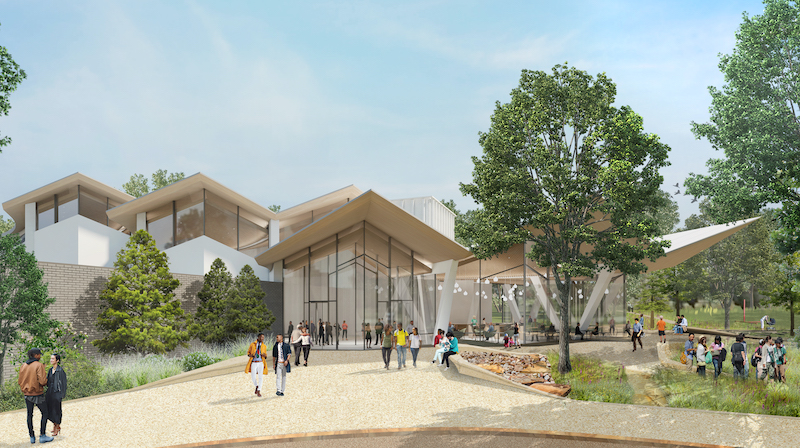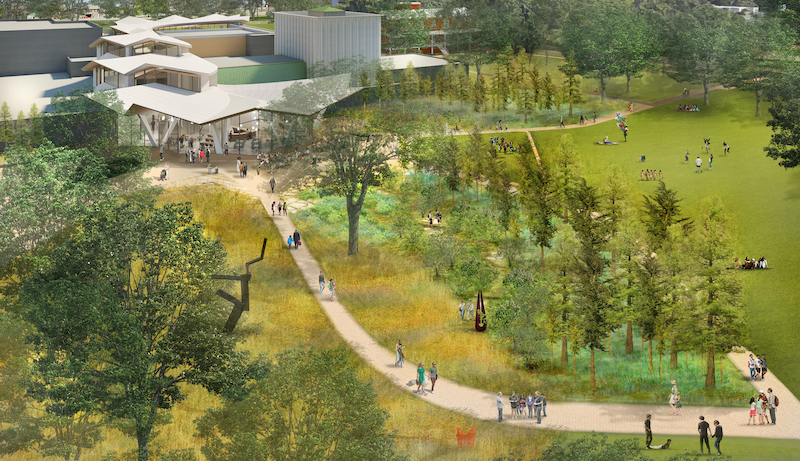Located in Little Rock, the Arkansas Arts Center is currently undergoing a $142 million transformation to become the Arkansas Museum of Fine Arts. The new museum will include an increase in space of almost 50% and the addition of 13 acres of new grounds.
The signature feature of Studio Gang’s design is a new structure, dubbed the Blossom, that winds through the length of the museum. Defined outwardly by its pleated roof, the Blossom will become the core of the visitor experience, laying out a clear path for visitors, uniting the museum’s programmed spaces, and providing major new public features at either end: an expansive glass-enclosed gathering space overlooking the Downtown side, and a restaurant that spreads out into MacArthur Park. The pleated roof also allows for the collection of storm water, which will feed the park’s new gardens and native perennial meadows.

The project joins the landscape experience with the museum and provides 2,200 linear feet of new paths and trails throughout 13 acres of MAcArthur Park. Inspiration for the landscape (designed by SCAPE Landscape Architecture) draws from Little Rock’s unique regional ecologies, including the banks of Fourche Creek, the bluffs of Emerald Park, and the agrarian landscapes of the Mississippi Delta.

SCAPE’s design preserves many of the parks existing mature trees and relies on sustainable, native plantings and incorporates more than 50 species of perennials, shrubs, native trees, and ornamental grasses. An additional 250 new trees will be planted, which will create a canopy throughout the park over time.
The Arkansas Museum of Fine Arts is slated for completion in spring 2022.


Related Stories
| Aug 11, 2010
Museum celebrates African-American heritage
The Harvey B. Gantt Center for African-American Arts + Culture recently completed construction on the Wells Fargo Cultural Campus in Charlotte, N.C. Designed by the Freelon Group, Durham, N.C., with Batson-Cook's Atlanta office as project manager, the $18.8 million project achieved nearly 100% minority participation.
| Aug 11, 2010
Design for Miami Art Museum triples gallery space
Herzog & de Meuron has completed design development for the Miami Art Museum’s new complex, which will anchor the city’s 29-acre Museum Park, overlooking Biscayne Bay. At 120,000 sf with 32,000 sf of gallery space, the three-story museum will be three times larger than the current facility.
| Aug 11, 2010
Thom Mayne unveils ‘floating cube’ design for the Perot Museum of Nature and Science
Calling it a “living educational tool featuring architecture inspired by nature and science,” Pritzker Prize Laureate Thom Mayne unveiled the schematic designs and building model for the Perot Museum of Nature & Science at Victory Park in Dallas. The $185 million, 180,000-sf structure is 170 feet tall—equivalent to approximately 14 stories—and is conceived as a large...
| Aug 11, 2010
Piano's 'Flying Carpet'
Italian architect Renzo Piano refers to his $294 million, 264,000-sf Modern Wing of the Art Institute of Chicago as a “temple of light.” That's all well and good, but how did Piano and the engineers from London-based Arup create an almost entirely naturally lit interior while still protecting the priceless works of art in the Institute's third-floor galleries from dangerous ultravio...
| Aug 11, 2010
The Art of Reconstruction
The Old Patent Office Building in Washington, D.C., completed in 1867, houses two Smithsonian Institution museums—the National Portrait Gallery and the American Art Museum. Collections include portraits of all U.S. presidents, along with paintings, sculptures, prints, and drawings of numerous historic figures from American history, and the works of more than 7,000 American artists.
| Aug 11, 2010
Silver Award: Please Touch Museum at Memorial Hall Philadelphia, Pa.
Built in 1875 to serve as the art gallery for the Centennial International Exhibition in Fairmount Park, Memorial Hall stands as one of the great civic structures in Philadelphia. The neoclassical building, designed by Fairmount Park Commission engineer Hermann J. Schwarzmann, was one of the first buildings in America to be designed according to the principles of the Beaux Arts movement.







